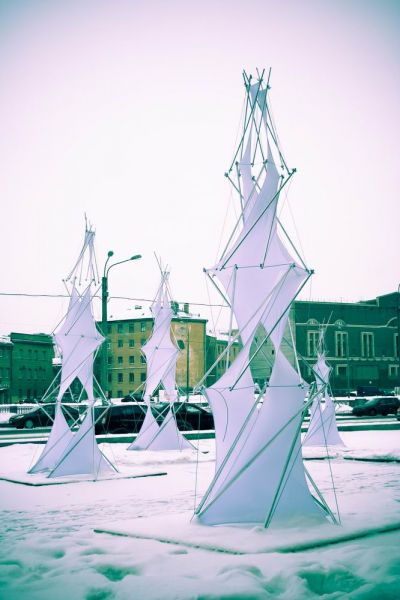|
|
INanimate forest

Annotation
Right from childhood, man learns to perceive and interpret images – to see people, animals, trees and flowers in the simplest geometrical forms. In our objects, recognizability is reduced to a single discernible silhouette. Unlike, for instance, artificial greenery, where maximum resemblance is the primary goal, here the structural principle behind plant construction is literally turned inside out (from the center to the periphery), that is, load-bearing framework on the outside, instead of branches – the taut membrane of fabric, and instead of the trunk – a void. But the keen human eye still senses the resemblance to nature. And this is no accident; after all, it’s the operating principle behind the musculo-skeletal system, in which the stability of the skeleton is provided by the balanced tension of elastic tissue.
The first to apply this method, Buckminster Fuller and Kenneth Snelson, dubbed it Tensegrity (tensional integrity or connection via compression). It was roughly in the 1960s that it began to find more widespread application in architectural practice, in particular, in bionic architecture.
Project authors: Freehand Sketch (Svobodnaya Klauzura) Alliance – Pyotr Berezin (director), Anna Mytsul, Alina Butakova, Tatyana Magdieva, Vladimir Petrosyan, and Mikhail Nemkov, with heartfelt thanks to friends.
Ordered by Creative Space TKACHI.

